Introduction
Migrating to cloud services represents a transformative step for organizations, unlocking myriad benefits such as scalability, flexibility, and enhanced collaboration. By enabling dynamic resource adjustment based on demand, cloud migration optimizes costs and boosts operational efficiency. The ability for teams to access applications and data from any location fosters seamless remote work and real-time collaboration, significantly driving productivity.
A well-executed cloud migration strategy, exemplified by Lincoln Financial's approach, involves adopting a multiprovider strategy and fostering collaboration beyond organizational boundaries. Prioritizing applications based on business needs and integrating automation with manual processes can streamline the transition, while addressing security considerations ensures compliance with current standards. Tailored cloud migration plans facilitate digital transformation, consolidate data centers, and provide access to cutting-edge technologies, thus enhancing the overall migration experience and ensuring substantial returns on investment.
Benefits of Migrating to Cloud Services
Migrating to cloud services offers extensive advantages such as scalability, flexibility, and enhanced collaboration. Organizations can dynamically adjust resources based on demand, optimizing costs and boosting operational efficiency. Cloud solutions also facilitate effortless remote work and real-time collaboration, permitting teams to access tools and information from any location, thereby enhancing productivity.
For instance, adopting a multiprovider strategy and fostering collaboration beyond organizational boundaries, as seen in Lincoln Financial's approach, ensures a smoother transition. Focusing on applications according to business requirements and combining automation with manual procedures can further enhance the transition. Additionally, working closely with partners to address security considerations helps meet current standards and ensures a robust transition.
Cloud transition strategies, customized for each organization's distinct requirements, enable digital transformation, consolidate data centers, and offer access to new technologies. A comprehensive plan that involves evaluating current IT infrastructure, choosing the appropriate provider, and developing a transition roadmap can significantly improve the relocation experience. By leveraging advanced technologies and maintaining agility, organizations can achieve substantial ROI from their cloud investments.
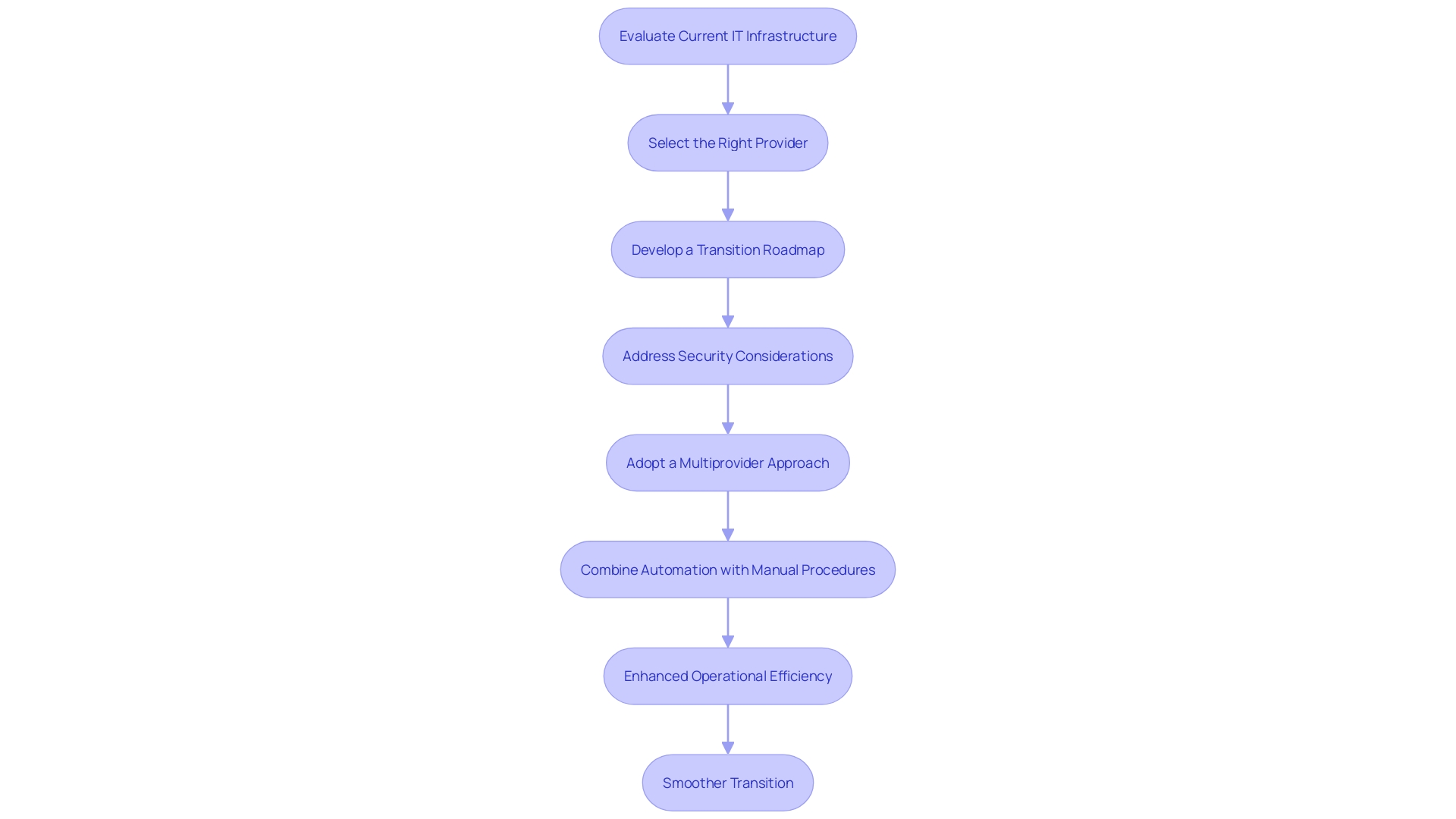
Key Features of AWS Application Migration Service
AWS Application Migration Service provides a variety of features aimed at simplifying the transfer process. Key functionalities include automated replication of applications to AWS, support for diverse source environments, and ensuring minimal downtime during transfer. The service is equipped with built-in monitoring and management tools to facilitate a seamless transition to cloud infrastructures.
A practical example of these capabilities in action is a recent project where a customer transitioned several Oracle databases on Amazon RDS to Amazon Aurora PostgreSQL. 'This transition aimed to achieve cost savings, better performance, and leverage the flexibility of open-source solutions.'. The procedure required thorough preparation, including outlining a relocation strategy, designating duties, and reading for any possible obstacles. 'The relocation journey underscored the importance of thorough evaluation and planning to address complexities like translating code and schemas between different database dialects.'.
Moreover, AWS is continuously enhancing its offerings to simplify operations and improve performance. For instance, the introduction of new models and capabilities in Amazon Bedrock highlights AWS's commitment to providing diverse model choices to meet varying customer needs. This ongoing innovation ensures that customers can optimize their cloud environments for better performance and cost efficiency.

Best Practices for Successful Application Migration
'To ensure a successful software transition, organizations should adopt best practices that encompass thorough planning, comprehensive assessment, and strategic execution.'. Begin with a detailed evaluation of your current infrastructure, identifying key goals and specific KPIs to measure success. It’s crucial to understand the type of migration—whether platform or domain—and the intricacies of the existing and target systems.
Utilize automation tools to simplify the transfer process and prioritize software based on business requirements, considering elements such as processing durations and software sensitivity. As Satyendra Kumar noted, a multiprovider, multipartner strategy can be invaluable, bringing together diverse expertise and ensuring collaboration beyond organizational boundaries. Security should also be a paramount consideration, with close attention to both legacy system nuances and current standards.
Extensive testing, both pre- and post-migration, is essential to identify potential issues and ensure seamless functionality. Engaging all parties from the beginning can equalize information gathering and sharing, as shown in a Wikipedia-style guide. This inclusive approach ensures that all critical insights are considered, minimizing misunderstandings and optimizing outcomes.
Adequate training for end-users cannot be overlooked. Ensuring that users are well-prepared and comfortable with the new system is key to minimizing disruption and ensuring smooth user adoption. By adhering to these best practices, organizations can manage the intricacies of software transition with assurance and reach their strategic goals.
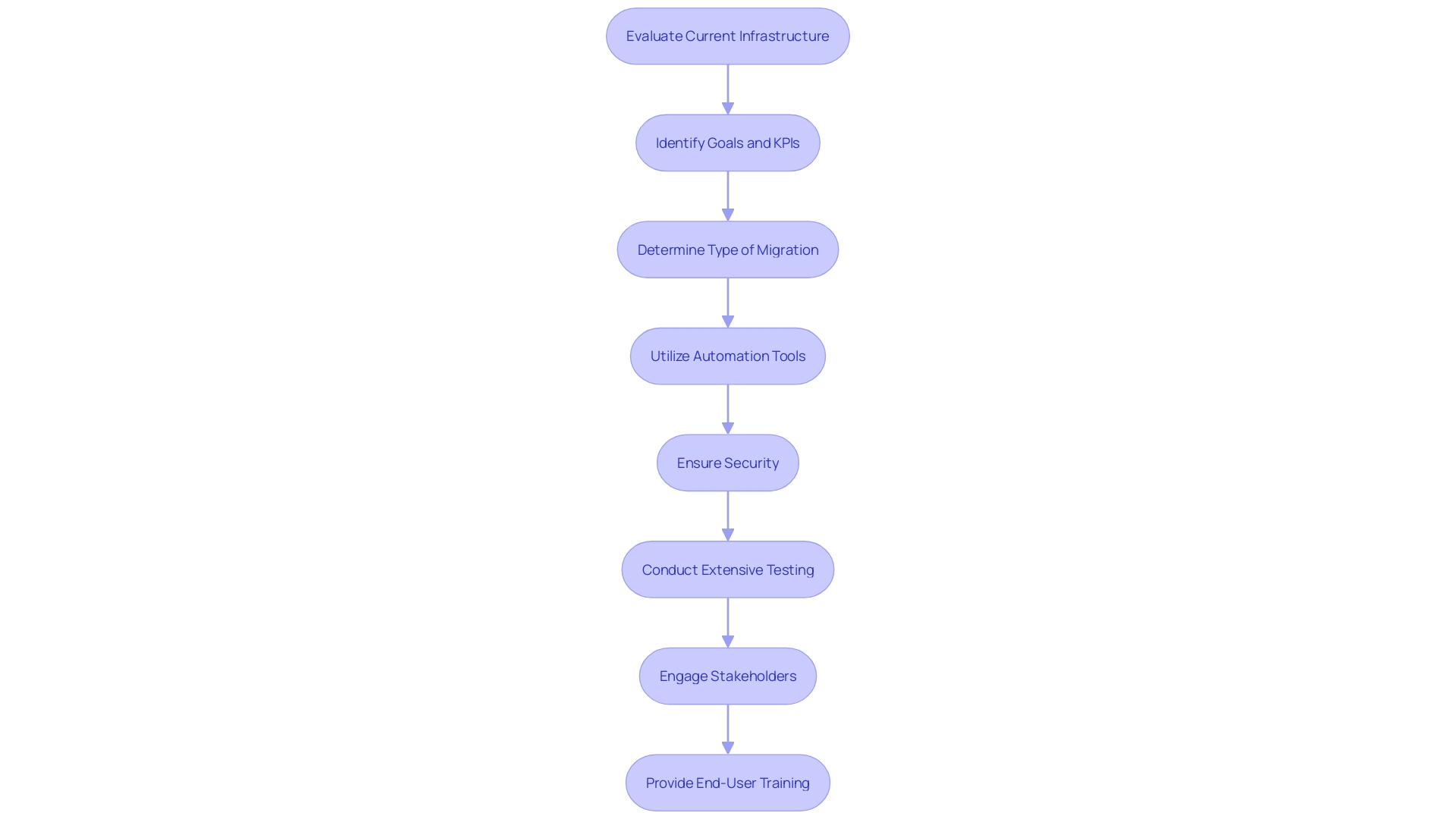
Common Challenges in Cloud Migration and Solutions
Entities starting on transitioning to remote storage frequently face various obstacles, including information security worries, software compatibility challenges, and possible service interruptions. To overcome these challenges effectively, conducting a thorough risk assessment is critical. This step involves evaluating your existing technology stack, application characteristics, and architecture to ensure readiness for the cloud transition.
Establishing strong security protocols is crucial to safeguard confidential information throughout and following the transfer process. This includes utilizing advanced encryption methods and multi-factor authentication to safeguard against unauthorized access. According to a comprehensive survey of 927 cybersecurity professionals, 78% of organizations are opting for hybrid and multi-cloud strategies, emphasizing the importance of strong security protocols.
Selecting a suitable transition strategy that permits gradual changes can reduce the risk of downtime and guarantee business continuity. For example, online services provide strong disaster recovery options, enabling data replication across multiple geographies to recover swiftly from failures or natural disasters. This is crucial for maintaining uptime and operational efficiency.
Employing professional advice and specialized digital transition tools can further simplify the transfer process. Partnering with providers who have a proven track record of success, strong security measures, and a range of services tailored to your organization's needs can significantly reduce the complexities involved. As emphasized by industry specialists, a readiness evaluation from a technology viewpoint is essential for a seamless transition.
In conclusion, while transitioning to online services presents challenges, a strategic approach that includes risk assessments, robust security implementations, and expert guidance can transform these challenges into opportunities for enhanced business agility and growth.
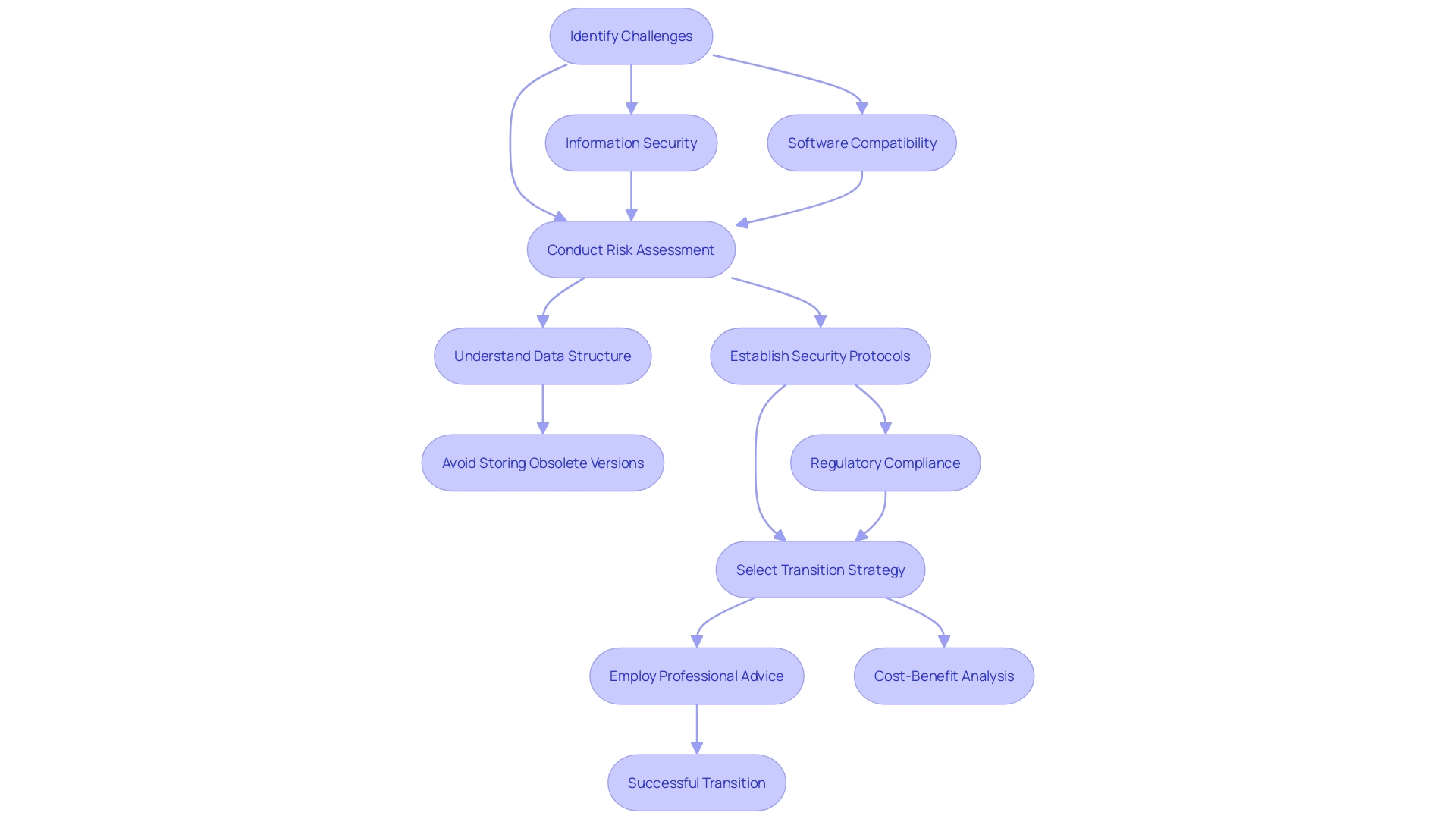
Security and Compliance Considerations in Application Migration
Safety and adherence to regulations are essential during the transfer of applications to remote servers. Organizations must ensure information protection throughout the migration process, adhering to relevant regulations. Implementing robust encryption, access controls, and continuous monitoring of cloud environments is crucial to safeguard sensitive information and maintain compliance. A comprehensive data protection strategy, including data classification, lifecycle management, backup, recovery, and risk management, is essential. This strategy must be continuously reviewed and updated to align with company goals, regulatory requirements, and the evolving threat landscape. Embedding security during the early stages of the application lifecycle and integrating security measures throughout the software development lifecycle, known as shift-left security and DevSecOps, can significantly enhance an organization’s security posture.
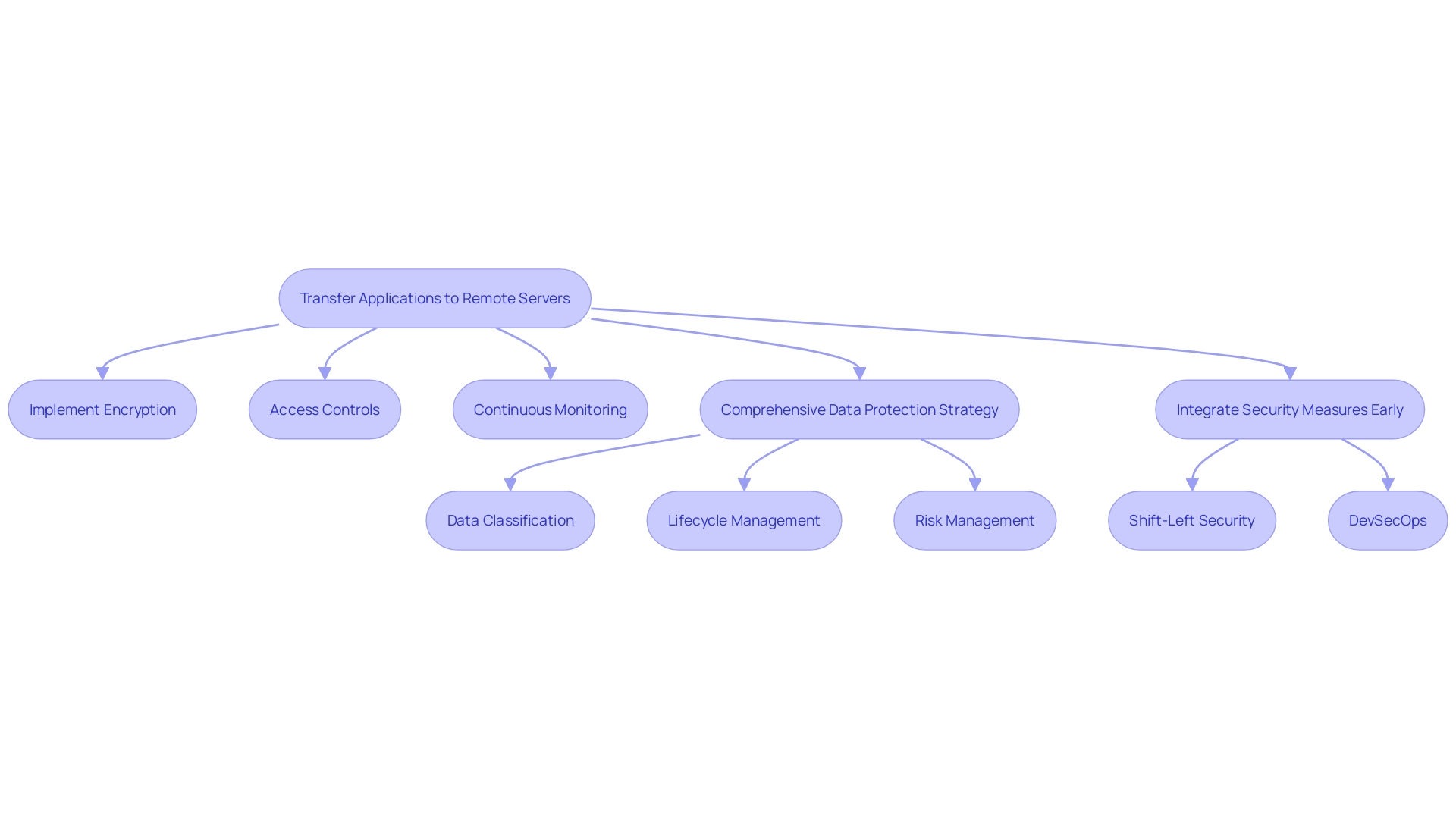
Cost Optimization and Sustainability in Cloud Migration
'Cost optimization serves as a crucial benefit of moving to remote services, providing organizations the opportunity to greatly lower operational costs through pay-as-you-go models.'. This financial benefit is amplified by eliminating the necessity for extensive on-premises infrastructure, which often demands substantial capital and maintenance costs.
Furthermore, shifting to online infrastructure aligns seamlessly with sustainability goals, promoting efficient resource use and reducing energy consumption. This is essential as the carbon footprint of online services is on a concerning rise, now surpassing that of the airline industry and increasing by 9% annually. The electricity utilized by one data center can be comparable to that used by 50,000 homes, highlighting the necessity for responsible digital practices.
Introducing online services also requires a strong emphasis on sustainable policies and governance. This involves incorporating cost and carbon emissions into operational goals, continuously monitoring progress, and setting governance mechanisms. By adopting such practices, organizations can optimize the efficiency of their cloud systems, balancing both cost savings and environmental impact while driving business value.
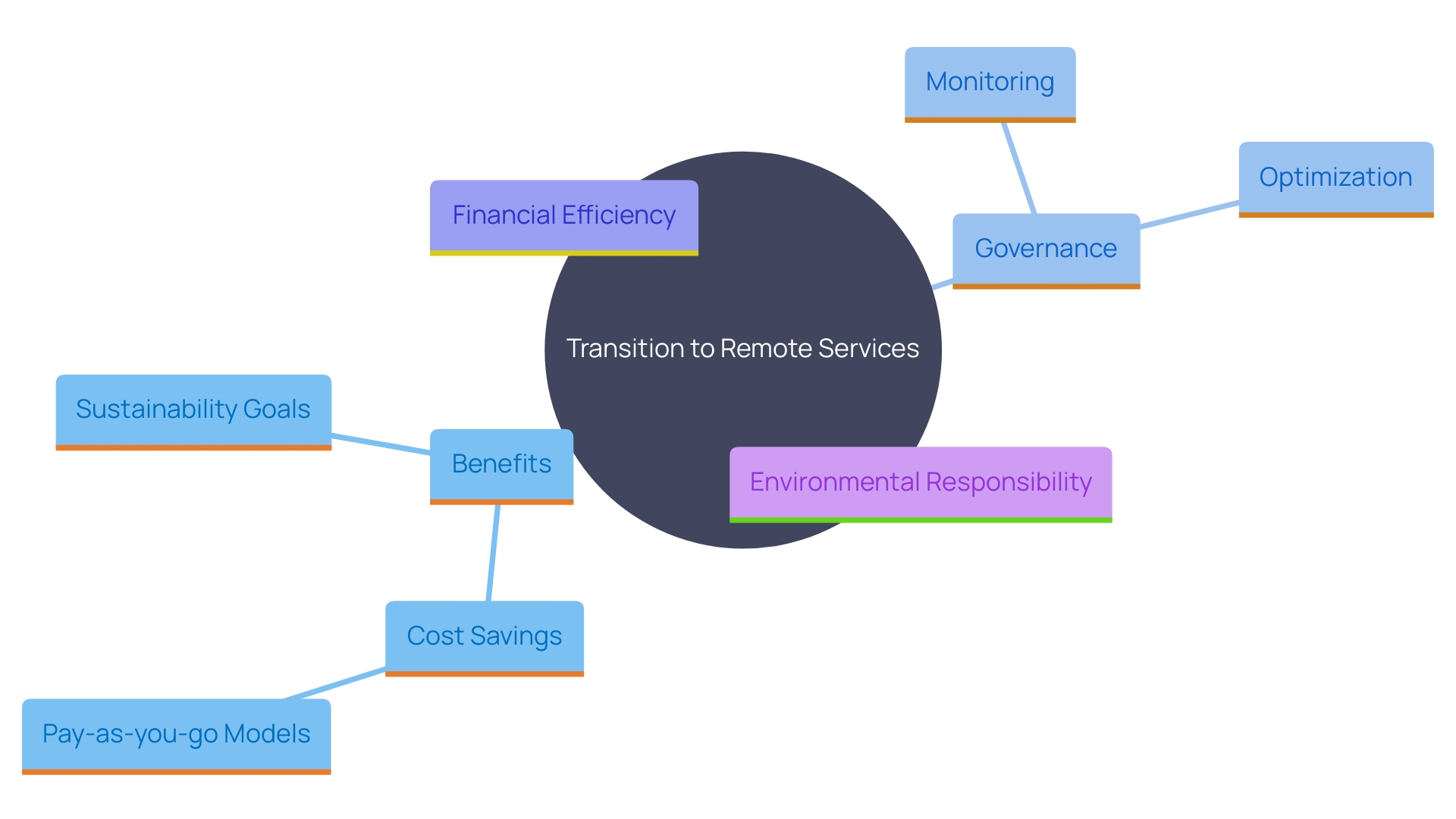
Conclusion
Migrating to cloud services presents organizations with a transformative opportunity to enhance operational efficiency, reduce costs, and foster collaboration. The key advantages of cloud migration, such as scalability and flexibility, enable organizations to adapt to changing demands while optimizing resource usage. The case study of Lincoln Financial illustrates the effectiveness of a multiprovider strategy, emphasizing the importance of collaboration and tailored migration plans that address specific business needs.
Implementing best practices for application migration is essential for success. Thorough planning, risk assessments, and stakeholder involvement ensure a smooth transition while minimizing potential disruptions. Organizations must also prioritize security and compliance, employing robust measures to protect sensitive data throughout the migration process.
By incorporating automation and comprehensive testing, organizations can effectively streamline their migration efforts, paving the way for enhanced productivity and user adoption.
Despite the challenges associated with cloud migration, such as data security concerns and application compatibility issues, a strategic approach can turn these obstacles into opportunities. Adopting hybrid and multi-cloud strategies, along with leveraging expert guidance, can mitigate risks and ensure business continuity. Furthermore, the focus on cost optimization and sustainability highlights the dual benefits of financial efficiency and environmental responsibility, making cloud migration a critical component of modern organizational strategy.
In summary, a well-executed cloud migration strategy not only drives digital transformation but also positions organizations for long-term growth and resilience in an increasingly competitive landscape. The integration of advanced technologies, adherence to security protocols, and commitment to sustainability will ultimately determine the success of cloud migration initiatives.




